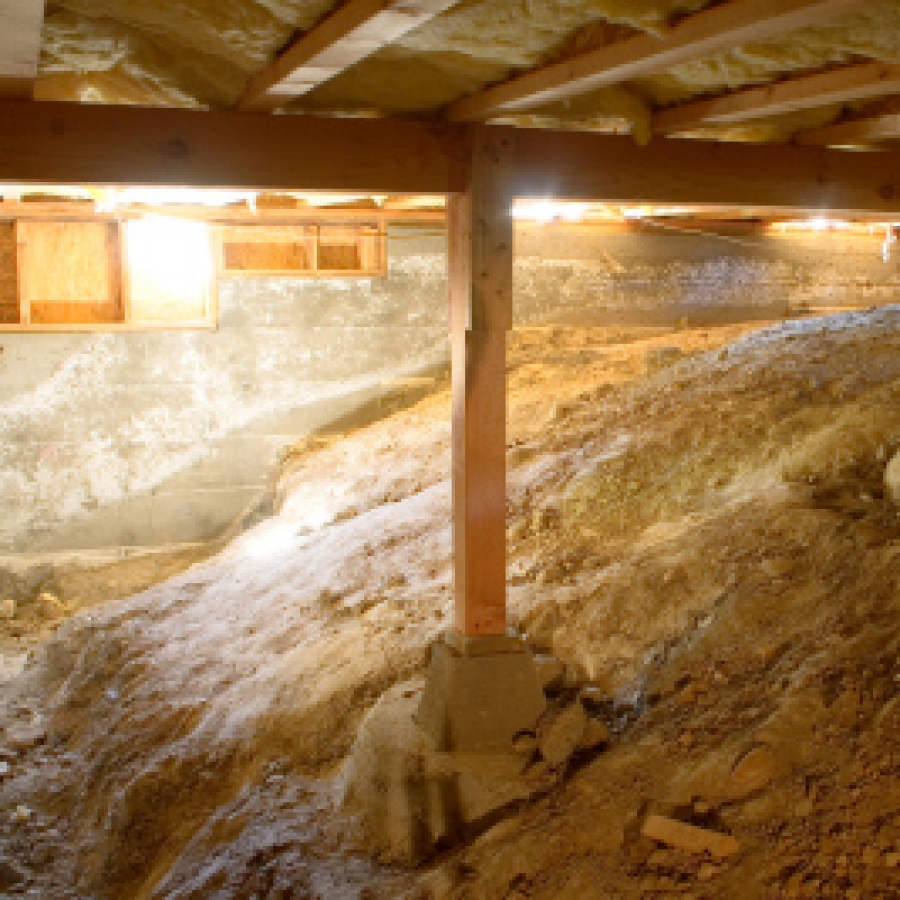Basement Insulation
A properly insulated basement can help reduce your energy costs. However, basement walls are one of the most controversial areas of a house to insulate and seal. You need to carefully consider the advantages and disadvantages, not to mention moisture control.

Topic Summary
Before insulating or deciding whether to add insulation to your basement, first see our information about adding insulation to an existing house or selecting insulation for new home construction if you haven't already.
Table 1. Annual Savings with Basement Wall Insulation |
||
| U.S. Cities | R-10* | R-2** |
| Buffalo, NY | $350 | $390 |
| Denver, CO | $310 | $360 |
| Minneapolis, MN | $400 | $450 |
| Seattle, WA | $280 | $320 |
| St. Louis, MO | $250 | $290 |
| Washington, DC | $250 | $280 |
*Such as 2 to 3 inches of exterior foam insulation.
**Such as with most insulated concrete forms.
Annual Energy Savings
The energy cost savings of basement wall insulation vary depending on the local climate, type of heating system, fuel cost, and occupant lifestyle. Typical annual cost savings by R-value in a few U.S. cities are provided in the table to the right for a 1,500 square-foot home with a conditioned basement heated by natural gas ($0.72/therm).
Advantages and Disadvantages
In most cases, a basement with insulation installed in the exterior basement walls should be considered a conditioned space. Even in a house with an unconditioned basement, the basement is more connected to other living spaces than to the outside. This connection makes basement wall insulation preferable to insulating the basement ceiling.
Compared to insulating the basement ceiling, insulating basement walls has the following advantages:
- Requires less insulation (1,350 square feet of wall insulation for a 36 x 48-foot basement with 8-foot walls, compared with 1,725 ceiling)
- More easily achieves continuous thermal and air leakage boundaries because basement ceilings typically include electrical wiring, plumbing, and ductwork.
- Requires little, if any, increase in the size of the heating and cooling equipment. The heat loss and air leakage through the basement ceiling is similar to that through the exterior walls of the basement.
These are some other advantages of insulation on exterior basement walls:
- Minimizes thermal bridging and reducing heat loss through the foundation
- Protects the damp-proof coating from damage during backfilling
- Serves as a capillary break to moisture intrusion
- Protects the foundation from the effects of the freeze-thaw cycle in extreme climates
- Reduces the potential for condensation on surfaces in the basement
- Conserves room area, relative to installing insulation on the interior.
The disadvantages of basement wall insulation include the following:
- Costs may exceed those for insulating the basement ceiling, depending on materials and approach selected
- Installation is expensive for an existing building unless a perimeter drainage system is also being installed
- Many exterior insulation materials are susceptible to insect infestation
- Some contractors are unfamiliar with proper detailing procedures that are critical to performance
- If surrounding soil contains radon gas, the house will require a mitigation system underneath the basement floor.
Adding insulation to the interior of the foundation is often more cost effective for an existing building. Interior insulation has the following advantages and disadvantages.
Advantages:
-
Interior insulation is much less expensive to install than exterior insulation for existing buildings

- Almost any insulation type can be used, giving a wider selection of materials
- The threat of insect infestation is eliminated
- The space is isolated from the colder earth more effectively than when using exterior methods
Disadvantages:
- Many insulation types require a fire-rated covering since they release toxic gases when ignited
- Interior insulation reduces usable interior space by a few inches
- It doesn't protect the damp-proof coating like the exterior insulation
- If the perimeter drainage is poor, the insulation may become saturated by moisture weeping through the foundation walls
- Superior air-sealing details and vapor diffusion retarders are important for adequate performance
Types of Basement Insulation

Once you have determined the insulation R-value you'll need for either adding insulation to an existing basement or new home construction, you can choose the type of insulation, including the following:
- Blanket (batt and roll) insulation
- Concrete block insulation (new construction)
- Foam board insulation
- Insulating concrete forms (new construction)
- Loose-fill insulation (good choice for finished basements)
- Sprayed foam insulation (good choice for finished basements)
The installation of insulation in your basement will depend on the type you choose and the best way to control moisture in your particular climate.
Other Considerations
When insulating any part of your home, you also need to consider proper air sealing and moisture control. Moisture control for basements is particularly important since they are notorious for problems with water intrusion, humidity, and mold.
Finally, you need to consider radon resistance or control when installing any type of foundation. See the Learn More resources on the right side of this page (or below if you've printed it out) for more information about radon and radon-resistant construction techniques.
Article source: The U.S. Department of Energy’s Office of Energy Efficiency and Renewable Energy (EERE). For the most up-to-date information please visit the EERE website.



